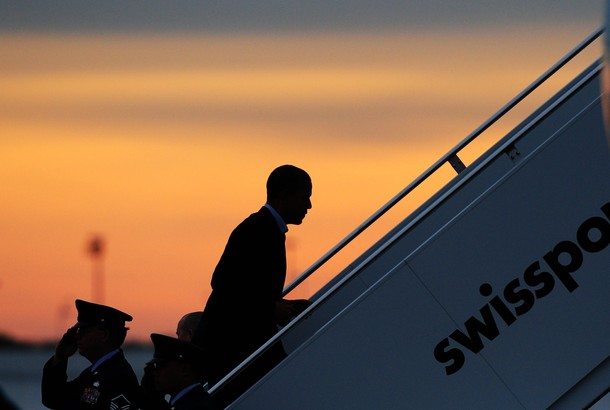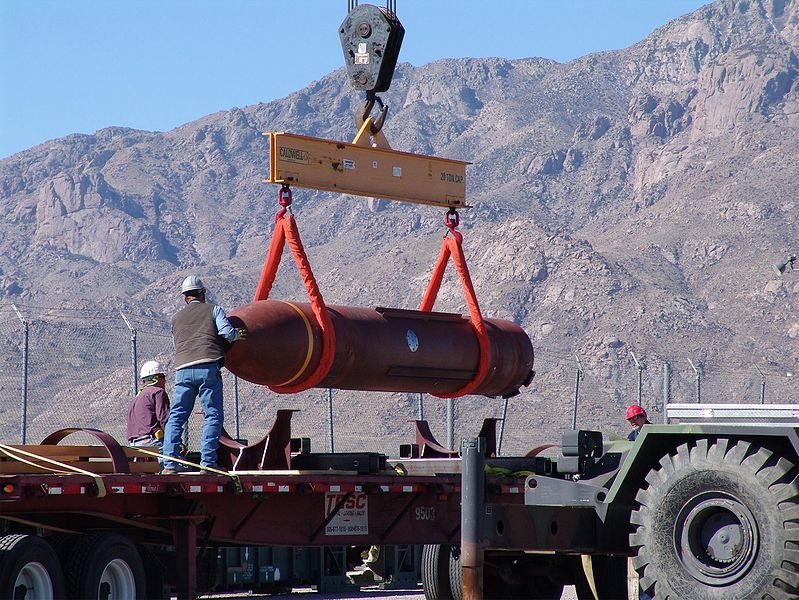US President Barack Obama began a 28-hour visit to long-time ally Australia Wednesday where their 60-year-old security alliance will be strengthened for a new century marked by the rise of China.
Air Force One touched down in the capital Canberra after flying from the president’s native Hawaii where he presided over a summit that expanded entry talks on a new pan-Pacific trade deal.
The two countries enjoy close relations and this was evident in the warm welcome a smiling Obama was given by Prime Minister Julia Gillard, with the pair exchanging kisses on the tarmac.
Obama was then afforded an official arrival ceremony at Parliament House, where he was given a 21-gun salute before inspecting an honour guard as helicopters hovered overhead.
His trip to Australia is expected to include an announcement on escalating military co-operation, in a clear statement by Washington that it intends to stand up for its interests and allies in a fast-emerging region.
Obama, who is seeking to reorient security policy towards Asia as the United States transitions out of Iraq and Afghanistan, wants to stress important economic and strategic ties between Australia and the United States.
The new arrangements “will speak to the deepening cooperation between the United States and Australia”, Deputy National Security Advisor Ben Rhodes said on Air Force One.
“It’s in response to Australia’s interest in pursuing that cooperation, and it will enable the US to have greater geographic balance in the Asia-Pacific region, it will enable us to respond to a range of interests in the Pacific region as well.”
The US leader was holding talks with Gillard ahead of a joint press conference, before addressing parliament on Thursday in what aides said is the “anchor speech” of his tour.
After Australia, Obama heads to Indonesia to attend Saturday’s East Asia Summit, a 16-nation grouping including China that the United States and Russia are joining for the first time.
Canberra has gone into virtual lockdown for the visit with hundreds of US Secret Service agents helping with security arrangements that have seen roads closed, F/A 18 Hornet fighter jets patrolling overhead and snipers on rooftops.
On Thursday, Obama heads to Darwin, where he is expected to announce US Marines will be deployed to an existing Australian base near the northern city.
Washington appears to be sending a signal to China and its expanding military with its deployment in Australia, but the White House also wants to extend its capability to deploy for disaster relief missions in Southeast Asia.
Gillard insisted that strengthening the US-Australia alliance was not a threat to a rising China, whose voracious demand for Australia’s natural resources has made it the nation’s biggest trading partner.
“I think it is well and truly possible for us, in this growing region of the world, to have an ally in the United States and to have deep friendships in our region, including with China,” she said.
US and Australian forces have served shoulder-to-shoulder in World War II, Korea, Vietnam and the wars in Iraq and Afghanistan, and US intelligence services retain a secret listening post at Pine Gap in the Australian outback.
Obama, who is facing a tough re-election campaign next year amid high unemployment and economic gloom, has twice been forced to postpone plans to visit Australia because of domestic political crises.
But in an attempt to synch domestic imperatives with foreign policy, aides are billing Obama’s Pacific tour as an attempt to pry open the regional markets that will be crucial to America’s economic future.











